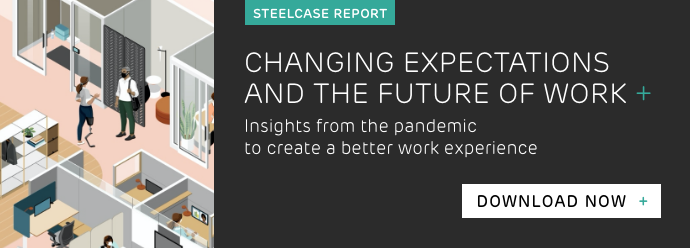Workplace design is evolving, with the introduction of different zones to support collaboration, individual work, creativity and privacy. Driving this trend is a growing awareness that the physical workplace has an impact on employee wellbeing.
In particular, modern businesses are recognising the need for employees to take time away from their desks to shake off the stress of the day and reset their batteries. It used to be that the only space you could go for some peace and quiet was the bathroom. Now, forward thinking companies are creating contemplative spaces, relaxation zones and meditative environments where workers can go to decompress, destress and recharge.
After all, improved employee wellbeing reduces sickness and absenteeism. It helps people feel more equipped to work, more productive, more creative, and less likely to burn out.
Contemplative spaces
“95% of today’s workers need quiet private spaces. But 40% say their workplaces don’t provide them.” Steelcase
Contemplative spaces optimise employee wellbeing by providing them with a quiet space to relax, unwind, and re-centre themselves. They offer moments of stillness, allowing the brain to reset and the batteries to recharge. Workers go back to their tasks with renewed energy and focus.
This calm, distraction-free zone should feel different from the rest of the workplace. It might include soft chairs and day beds. Furniture that supports lounging can help us recharge while aiding creative thinking.
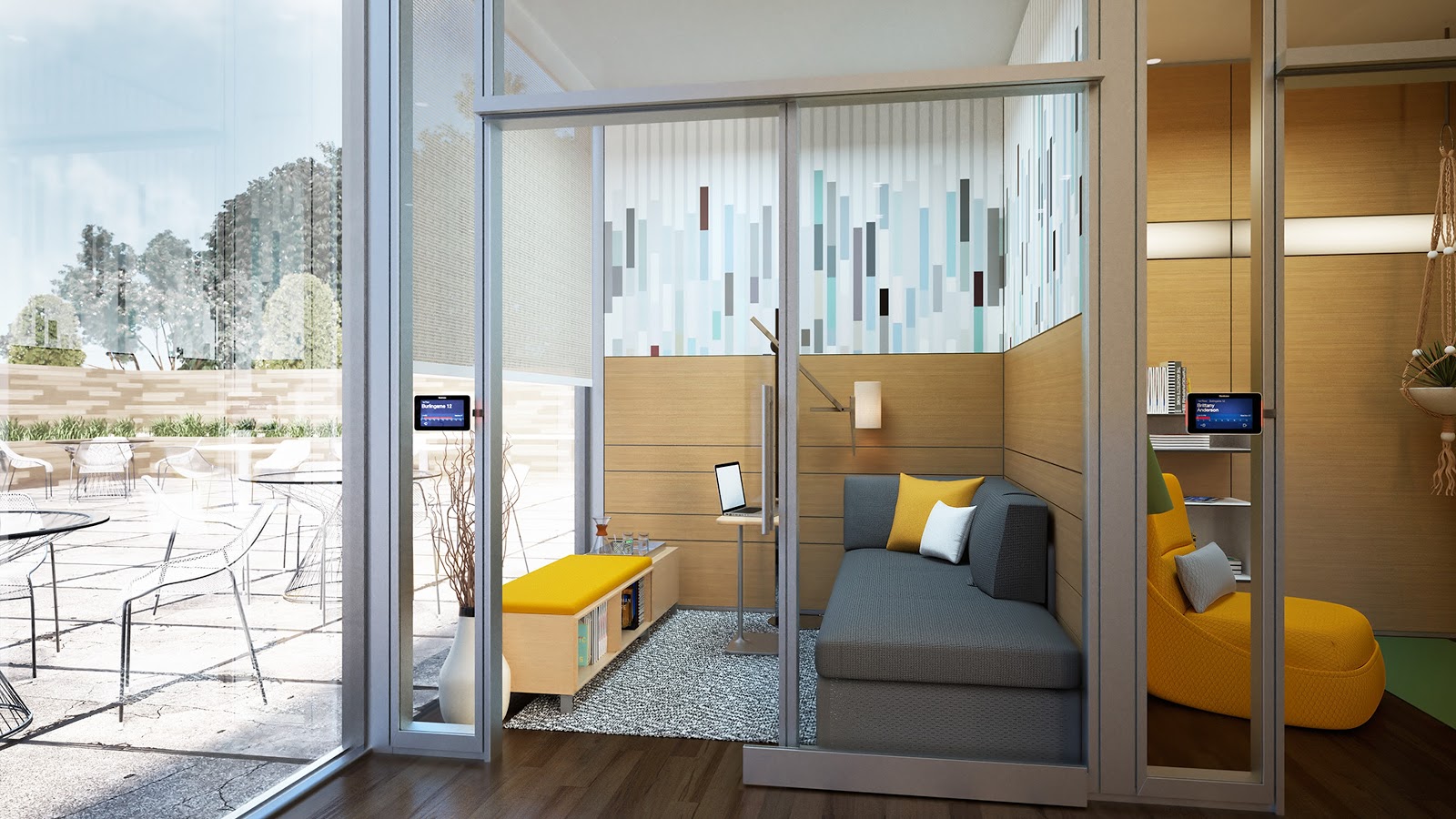
No-tech zones
No-tech zones allow employees to escape from the relentless buzz of phones and laptops to regain their focus. In a world where people are glued to their smartphones, it’s a chance to feel the benefits of a few disconnected minutes. A digital detox, if just for a short while, can help reduce stress levels and encourage the brain and body to unwind.
In these spaces, workers can leave their device at the door and there are no sockets to plug in laptops or other digital equipment, providing the ultimate chill zone.
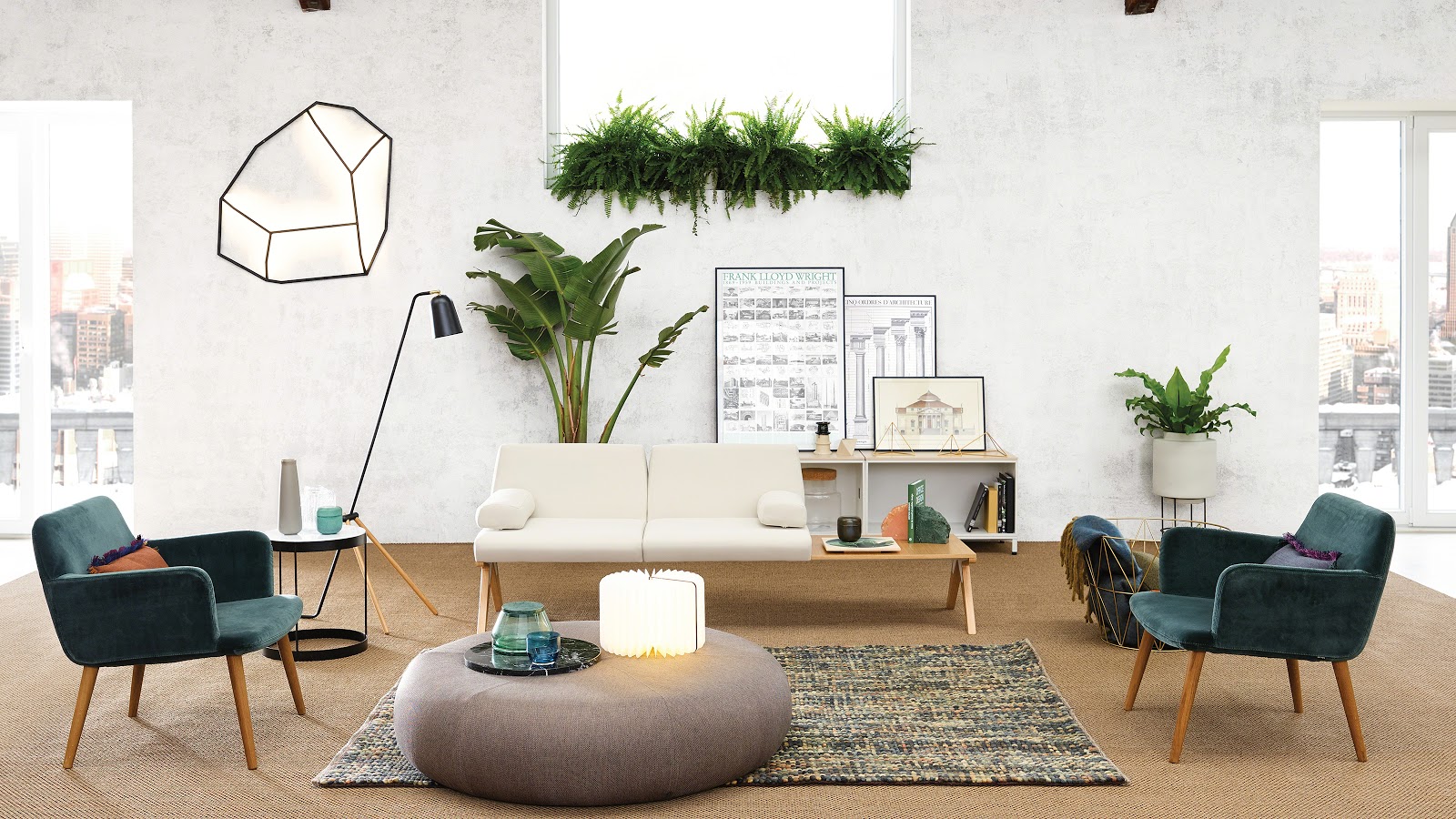
Pods
Pods don’t have to be for making calls or hosting quick meetings. They can be used to relax and recuperate in private and away from technology.
Nap pods, first popularised by Google, are now being found in offices all over the world. MetroNaps have installed hundreds of their EnergyPods in offices across the globe, and Podtime provides similar tubular units to encourage workers to take short bursts of rest throughout the working day. Although controversial, nap pods can be a great solution for workers in need of a boost of energy.
The benefit of pods is that they can be added to open plan spaces, enabling people to get away from the noise and distractions of the office.
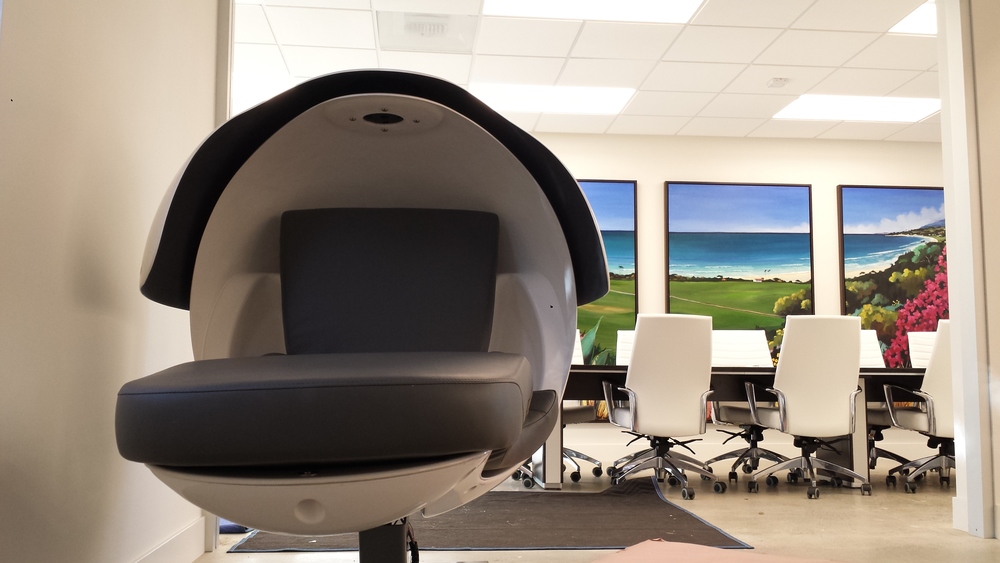
Image source: MetroNaps
Social spaces for relaxation
“Easy access to colleagues, nourishment and places to rest the mind helps cognitively-overwhelmed workers gain a new perspective.” Steelcase
Not all contemplative spaces have to be private. Social zones can be created to host a range of nurturing activities, from grabbing a coffee, to taking a moment to reflect, or having a relaxed conversation with colleagues. Workers go back to their tasks feeling rejuvenated.
In the image below, the fireplace surrounded by natural wood (1) and Steelcase's Visalia Lounge chair (2) encourage calm contemplation and reflection.
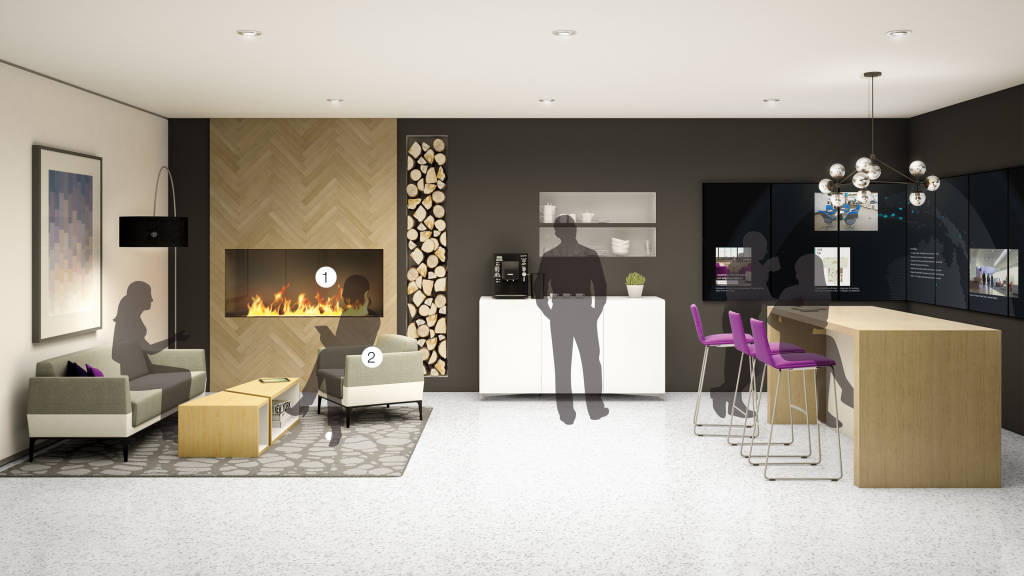
Meditation rooms
“Studies show meditation improves your creative and critical thinking, reduces stress, and smooths out interpersonal relationships. A tired, stressed employee is not going to be doing their best work.” Michael Miller, director of New York Meditation Center
Meditation rooms are another hot new trend. Google, Yahoo and Nike have all added designated meditation spaces to their offices. And more than half of Salesforce offices have a “mindfulness zone” on each floor, where employees can put their phones and laptops aside for a moment of quiet. The business benefits just as much as the employee, as CEO at Salesforce, Marc Benioff, explains,
“A beginner’s mind is the practice of looking at the world with fresh, unencumbered eyes, and avoiding inside-out or homogenous thinking that can lead to blind spots and missed opportunities. To encourage this mindset, we have ‘mindfulness zones’ on every floor of our office buildings where employees can put their phones into a basket and clear their minds.”
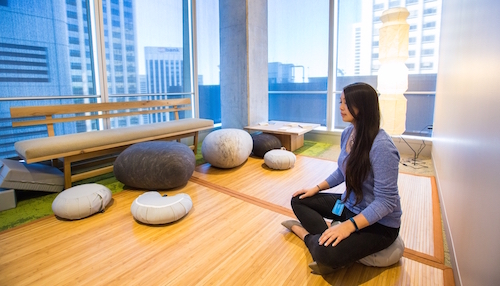
Image source: Salesforce
Outdoor spaces
Contemplative spaces and relaxation zones don’t have to be confined to indoors. Outdoor spaces are also being used to reduce stress and promote calm.
“Now, developers and owners of urban office buildings are adding terraces and transforming once-barren rooftops into parklike settings, where workers can plant vegetables, unfurl yoga mats or swing in a hammock.” Jane Margolies, The New York Times
Driving this trend is a growing recognition that being outside and in contact with nature promotes wellbeing. Restorative rooftop gardens, sprawling decks, and prayer atriums are just some examples of outdoor spaces being created to promote wellbeing.
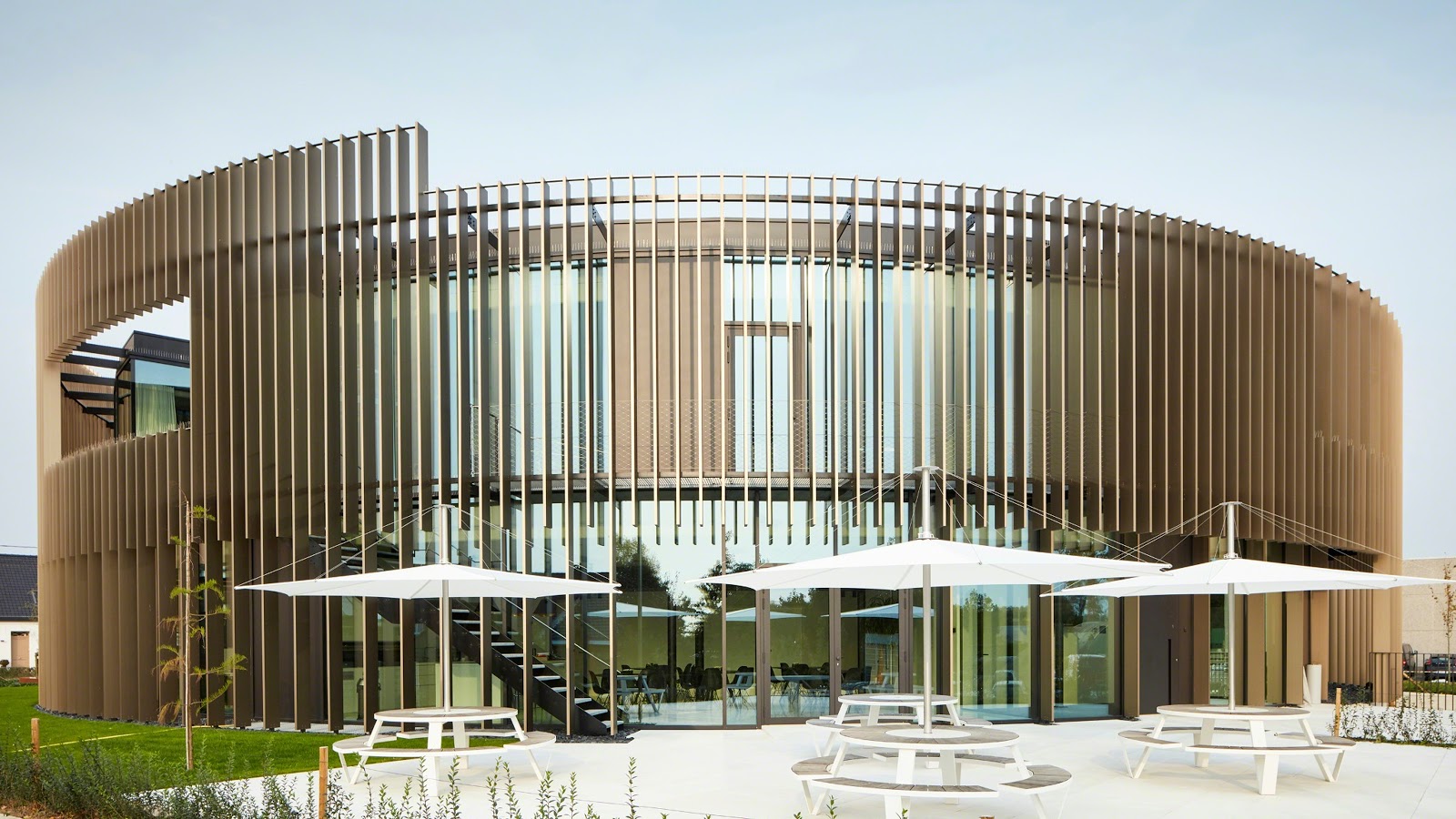
A shift in mindset
Introducing contemplative spaces into your workplace requires a shift in mindset. Workers are so used to being in front of their screens and making sure they account for every moment of their time in the office. But modern businesses recognise that workers don’t have to be sitting typing or in a meeting to be productive.
As Steelcase researchers discovered, neuroscience tells us it’s not possible for any worker to engage in eight hours of controlled attention. Our brains are still working even when we take breaks. In fact, stepping away from our work is often when the best ideas happen.
“That old adage about focusing too hard so you can’t see the forest through the trees and the stereotype of ‘aha’ moments in the shower or driving to work—now we know that those really have a scientific component. Neuroscience helps us understand that often the best way to solve a problem is to walk away from it and let your brain do the work subconsciously.” Donna Flynn, vice president of the WorkSpace Futures team
Summary
The workplace can have a huge effect on employee wellbeing. As more companies have adopted open plan working spaces in an attempt to increase collaboration and innovation, workers are craving a space to get away from the noise and buzz of the office.
Contemplative spaces, in whatever form they take, whether a nap pod, private room, relaxation space, meditation room or an outdoor terrace, can help support employee health and wellbeing. Soft furnishings aid both comfort and creative thinking, and workers can go back to their tasks feeling enriched and rejuvenated.


